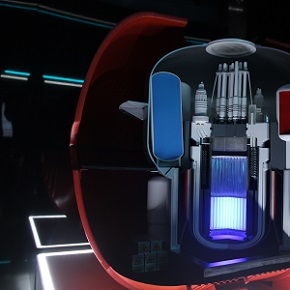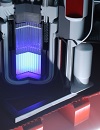 |
||
|
AtomExpo-2022: raw materials for NFC AtomInfo.Ru, PUBLISHED 05.12.2022 On November 21-22, 2022, the XII ATOMEXPO-2022 International Forum was held at the Sirius Center in Sochi. The forum was attended by over 3,000 specialists and guests from Russia, as well as 65 countries of the near and far abroad: representatives of business, government agencies, international organizations. Several round tables were organized within the framework of the forum. One of it was devoted to the issues of raw materials for nuclear energy. CONTINUED BELOW At the round table (c) Igor Balakin (AtomInfo.Ru)  The Russian approach A characteristic feature of the current stage of development of the nuclear industry is a rational approach to the use of natural uranium resources. The centrifuge technologies have made the re-enrichment of depleted uranium real and commercially effective, and the processing technologies allow the extraction and return of uranium from spent fuel into the cycle. The secondary sources are already helping to reduce the consumption of natural uranium for the operation of nuclear power plants, but the main breakthrough in the efficiency of uranium use is expected after the widespread introduction of the closed nuclear fuel cycle (NFC). Vladislav Korogodin, Director of the Management of the NFC and Nuclear Power Plants of the Rosatom State Corporation, briefly outlined at the round table the approach to the spent nuclear fuel (SNF) adopted at Rosatom:
Uranium and plutonium in Russia With this approach, two tasks are assigned to plutonium, and the first steps towards its use in Russia have already been taken. The BN-800 fast sodium reactor has been converted to MOX fuel. Now 93% of the reactor core is loaded with such fuel, and 100% loading is expected in 2023. Switching to MOX fuel means that savings on natural uranium will amount to more than 300 tons per year for BN-800 only. For thermal reactors in Russia, various options for using plutonium are being considered. The speaker focused on the VVER-S project, the first unit for such a project should appear at the Kola NPP by 2034. This is a reactor with spectral regulation and the conversation ratio of the order of 0.7. In accordance with the project requirements, the VVER-S reactor will be able to operate at 100% MOX fuel loading. The RepU is now widely used in Russia for thermal reactors. Since the beginning of the 90s, the RepU has been used in the manufacture of fuel for RBMK. At first, it was a RepU with a low content of uranium-232, and since 2020, the content of uranium-232 in the RepU fuel of RBMK has been increased to 5 ppb. The new permissible content of uranium-232 in the reprocessed uranium for RBMK fuel is approximately twice the content of this isotope in the original uranium extracted from SNF. It should be borne in mind that when enriching regenerated uranium, the 232nd isotope goes into the enriched uranium product, and not into the tails. In the future, work is planned in Russia to purify the RepU from uranium-232 using a centrifuge method. Rosatom is also actively engaged in the use of the RepU in VVER reactors. Today, the RepU is used in experimental programs at the Kola (VVER-440) and Kalinin (VVER-1000) nuclear power plants. After 2027, it is planned to widely introduce the RepU on units with VVER-1200 reactors. Vladislav Korogodin noted that the first experimental work on minor actinides transmutation on the BN-800 will start in 2024. Topics: Uranium, MOX-fuel, Rosatom, Opinions Other news: 423 nuclear units are operating in the world, 57 units are under construction In 2022, construction started for 7 units, 4 with Chinese reactors and 3 with Russian ones. WANO announces the winners of the 2022 Nuclear Excellence Awards WANO presents the awards during each WANO Biennial General Meeting. The Paks II Nuclear Power Plant receives construction licence This is the first time that a power unit with this type of reactor has been issued a construction licence in the European Union. |
Hero of the day 
Over 3000 Attend ATOMEXPO 2022 International Forum The 12th ATOMEXPO 2022 International Forum took place in Sochi (Russia) on 21-22 November. Over 3,000 guests, including businesspeople, government agencies, and international organisations, from Russia and 65 other countries attended the event. INTERVIEW
AtomInfo.Ru OPINION
Zhao Xuelin, |

